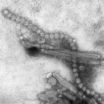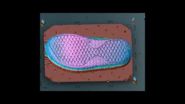(Press-News.org) An experimental vaccine to protect people against H7N9 avian influenza prompted immune responses in 59 percent of volunteers who received two injections at the lowest dosage tested, but only if the vaccine was mixed with adjuvant—a substance that boosts the body's response to vaccination. Without adjuvant, immune responses produced by the investigational vaccine were minimal regardless of vaccine dosage, according to findings from a clinical trial sponsored by the National Institute of Allergy and Infectious Diseases (NIAID), part of the National Institutes of Health.
The Phase 2 trial enrolled 700 healthy adults aged 19 to 64 years old at four NIAID-sponsored Vaccine and Treatment Evaluation Units (VTEU) in the United States. It was led by Mark J. Mulligan, M.D., of Emory University, Atlanta. Results appear in the current issue of the Journal of the American Medical Association.
The first recognized human H7N9 avian influenza cases occurred in China in early 2013. Most people who have become infected with the virus had contact with infected poultry. The virus does not sicken birds, but can cause people to become seriously ill, with approximately 67 percent of reported cases requiring hospitalization. As of September 4, 2014, a total of 452 laboratory confirmed cases, including 166 deaths, had been reported to the World Health Organization.
"Although this influenza virus does not currently spread easily from person to person, all novel influenza viruses have the potential to evolve to cause widespread illness or death," said NIAID Director Anthony S. Fauci, M.D. "Therefore, it is prudent to conduct clinical trials such as this one to be prepared in the event of an H7N9 avian influenza pandemic."
The experimental vaccine, made from inactivated H7N9 virus grown in chicken eggs, was manufactured by Sanofi Pasteur (Swiftwater, PA). The adjuvant, MF59, used widely in Europe but not licensed in the United States, was manufactured by Novartis Vaccines (Marburg, Germany) and was mixed with the vaccine just prior to use. Both products were supplied by the Biomedical Advanced Research and Development Authority (a part of the Department of Health and Human Services) from the National Pre-Pandemic Influenza Vaccine Stockpile.
The 700 study volunteers were divided into groups of approximately 100 each. All received two injections, spaced 21 days apart, and had blood drawn on both inoculation days as well as on three additional time points. Two groups received vaccine at either 15 micrograms (mcg) or 45 mcg without adjuvant. Without adjuvant, even those participants who received the higher dosage vaccine had minimal immune responses. This was not unexpected, as an earlier clinical trial of an experimental unadjuvanted vaccine based on H7 avian influenza virus elicited little or no detectable antibody responses.
The remaining five groups of participants received two injections of vaccine at one of three different dosages (3.75 mcg, 7.5 mcg or 15 mcg). Three of the groups received MF59 adjuvant with both inoculations, while the final two groups received only one dose of adjuvant with their first or second injection of vaccine. No serious vaccine-related adverse events were reported in any of the groups. Participants who received adjuvant reported more mild pain and tenderness at the inoculation site than those who received only vaccine. In general, the inoculations were well-tolerated and side effects were mild.
The researchers used a standard test called the hemagglutination inhibition (HAI) antibody assay to assess the likelihood that the experimental vaccine would provide protection against influenza disease. HAI levels of 40 or more signal that an influenza vaccine induced an immune reaction that is likely to prevent influenza disease. In this trial, the key HAI assays were performed on blood samples taken at 42 days after the first inoculation.
Among the volunteers who received two injections of the lowest dose of vaccine along with two doses of adjuvant, 59 percent had HAI levels of 40 or more. The most surprising finding, noted the researchers, came from the volunteer group that received 15 mcg dose vaccines and just one dose of MF59 at the time of the first vaccine. Among that group, the antibody responses were not significantly lower than those who received two doses of adjuvant, suggesting that a single dose of adjuvant given with the first dose of vaccine may be sufficient to prompt a significant immune response. If true, this would be of particular importance in the event of a pandemic, when adjuvant-sparing and vaccine antigen-sparing vaccine regimens could be used to stretch available supplies of vaccine and adjuvant as far as possible.
INFORMATION:
In addition to Emory University, the NIAID VTEUs at Cincinnati Children's Hospital and Medical Center; the University of Iowa in Iowa City; and the University of Texas Medical Branch at Galveston participated in this trial.
Additional details about this clinical trial are available at ClinicalTrials.gov using the identifier NCT01938742.
NIAID conducts and supports research—at NIH, throughout the United States, and worldwide—to study the causes of infectious and immune-mediated diseases, and to develop better means of preventing, diagnosing and treating these illnesses. News releases, fact sheets and other NIAID-related materials are available on the NIAID Web site at http://www.niaid.nih.gov.
About the National Institutes of Health (NIH):
NIH, the nation's medical research agency, includes 27 Institutes and Centers and is a component of the U.S. Department of Health and Human Services. NIH is the primary federal agency conducting and supporting basic, clinical, and translational medical research, and is investigating the causes, treatments, and cures for both common and rare diseases. For more information about NIH and its programs, visit http://www.nih.gov.
Reference: MJ Mulligan et al. Serological responses to an avian influenza A/H7N9 vaccine mixed at the point-of-use with MF59 adjuvant: a randomized clinical trial. JAMA DOI: 10.1001/jama.2014.12854 (2014).
http://www.niaid.nih.gov
A large, NIH-sponsored clinical trial of an experimental H7N9 avian influenza vaccine found an immune response that was believed to be protective in 59 percent of study participants who received two injections of the inactivated vaccine at the lowest dosage tested when mixed with an adjuvant – a component that boosts the body's immune response and enhances the effectiveness of inactivated influenza vaccines.
Participants who received a vaccine without the adjuvant had a minimal immune response.
The results are published in the Journal of the American Medical ...
VIDEO:
This video shows the sole of a shoe as it appears from different perspectives in rendering software. The shoe was placed upside down on an optical table (seen as flat...
Click here for more information.
Researchers at the National Institute of Standards and Technology (NIST) have demonstrated a laser-based imaging system that creates high-definition 3D maps of surfaces from as far away as 10.5 meters.* The method may be useful in diverse fields, including precision machining ...
(SALT LAKE CITY)—University of Utah biochemists have reported a new drug discovery tool against the Ebola virus. According to a study published in this week's online edition of Protein Science, they have produced a molecule, known as a peptide mimic, that displays a functionally critical region of the virus that is universally conserved in all known species of Ebola. This new tool can be used as a drug target in the discovery of anti-Ebola agents that are effective against all known strains and likely future strains.
The University of Utah (U of U) work, which was ...
The link between low average glucose blood levels and greater risk for severe hypoglycemia and hypoglycemic coma substantially declined between 1995 and 2012 in young Germans and Austrians with type 1 diabetes, according to a study published by Beate Karges and colleagues from the RWTH Aachen University, Germany in this week's PLOS Medicine.
The researchers obtained measurements of average blood glucose levels (measured as HbA1c) and the incidents of severe hypoglycemia and hypoglycemic coma from 37,539 children and young adults with type 1 diabetes between 1995 and 2012 ...
Treatment with dimercaptosuccinic acid (DMSA), an oral chelation agent, was linked to reductions in the amount of lead in blood in young children in Zamfara State, Nigeria following environmental lead contamination, according to a study by Jane Greig and colleagues from Médecins Sans Frontières (MSF) published in this week's PLOS Medicine.
The researchers report findings from an MSF program initiated in May 2010 to reduce lead poisoning in children following widespread environmental lead contamination due to gold mining in Zamfara State, Nigeria, leading to ...
A fundamental question in neurobiology is how animals, including humans, make decisions. A new study publishing in the open access journal PLOS Biology on October 7 reveals how fruit fly females make a very important decision: to either accept or reject male courtship. This decision appears to be generated by a very small number of excitatory neurons that use acetylcholine as their neurotransmitter located in three brain regions. This study provides the framework to understand how decisions are generated and suggests that a decision is reached because that option is literally ...
Researchers at the University of California, San Diego School of Medicine have, for the first time, clearly defined the epidemiology of gastrointestinal stromal tumors (GIST), which occur primarily in the lining of the stomach and small intestine. One key finding: Patients of Asian descent, who have not previously been identified as an at-risk population, are 1.5 times more likely than other patient groups to be diagnosed with this type of tumor. Results of the study were published this week in Cancer Epidemiology, Biomarkers & Prevention, a journal of the American Association ...
WASHINGTON (Oct. 7, 2014) — Nearly 20 percent of Americans have a disability, yet only 25 percent of medical schools include in their curricula caring for people with disabilities. Numerous reports have documented that people with disabilities have poorer health and receive inferior care.
In a Narrative Matters essay published in Health Affairs, Leana Wen, M.D., director of patient-centered care research and assistant professor of emergency medicine at the George Washington University School of Medicine and Health Sciences, shares her own experiences to highlight ...
COLUMBUS, Ohio – A molecule that helps cancer cells evade programmed self-destruction, an internal source of death, might also help malignant cells hide from the immune system, an external source of death.
A new study by researchers at The Ohio State University Comprehensive Cancer Center – Arthur G. James Cancer Hospital and Richard J. Solove Research Institute (OSUCCC – James) shows that a molecule called nuclear factor kappa B (NF-kB) helps cancer cells by inhibiting the immune system's ability to detect and destroy them. The molecule regulates genes ...
DALLAS – Oct. 7, 2014 – Researchers at UT Southwestern Medical Center have found an "Achilles heel" in a metabolic pathway crucial to stopping the growth of lung cancer cells.
At the heart of this pathway lies PPARγ (peroxisome proliferation-activated receptor gamma), a protein that regulates glucose and lipid metabolism in normal cells. Researchers demonstrated that by activating PPARγ with antidiabetic drugs in lung cancer cells, they could stop these tumor cells from dividing.
"We found that activation of PPARγ causes a major metabolic ...



